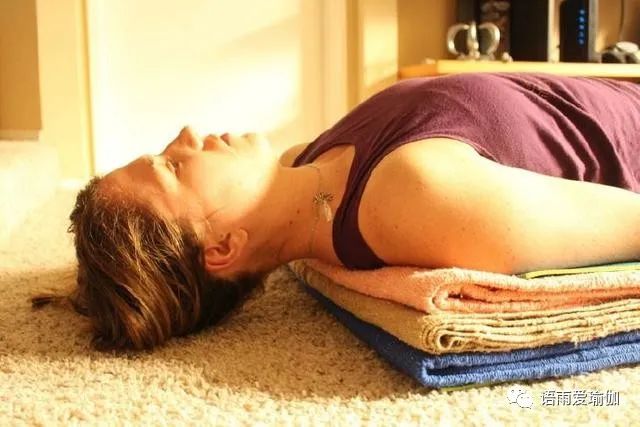Shoulder handstand is called “the mother of asana”.

It is one of the most popular postures and is widely used in all types of yoga because of its many benefits.

Practicing shoulder handstand can calm the nervous system, reduce varicose veins, stimulate the throat chakra (help maintain clear communication), reduce wrinkles and help sleep.

But it’s very important to note that if you don’t do it well, it will cause harm, which most practitioners (and teachers) don’t know.

Although bksiyengar doesn’t use assistive devices in yoga light, Iyengar yoga has always been famous for using assistive devices in his teaching style.

In Iyengar’s early days, his students began to develop neck diseases, such as arthritis and intervertebral disc degeneration, after practicing shoulder Handstand on a flat cushion.
This prompted him to support his neck with a blanket to keep his spine bent naturally.
The cervical spine (neck) has a lordosis curve, which means that the natural curve of the neck is inward.
When you practice standing with your shoulders upside down on the floor without supporting your neck, you are actually flattening the area and applying great flexion (or bending) to your cervical spine.
Stretching these muscles to such limits is very dangerous, in addition to bearing the weight of the whole body in this area of the spine.
There is also a large artery called carotid artery on the neck, which is located in front of the neck and flows from the heart to the brain.
After cutting off the oxygen, the oxygen will stop flowing to your brain, which may lead to stroke, vision loss and even intervertebral disc degeneration.
That’s why you need to raise your shoulders and arms while putting your head and shoulders on the floor.
The main purpose is to prevent the neck from bending more than 75 degrees (the maximum angle at which most cervical vertebrae can bend forward) and separate the weight of the body from the fragile cervical vertebrae.
It also allows you to put the right weight on your shoulders and completely remove the weight from your neck.
To set the support of shoulder handstand, you need: 3 Yoga blankets and 1 yoga mat.
Fold the blankets into a square shape (about 30cm by 60cm), and then stack them evenly in the same direction.
As shown in the figure below, put the blanket on the mat and fold the bottom edge of the mat on the blanket (where the hem is located), And leave a bare blanket about 60cm around the neck to avoid sticking to the mat.
The reason why the mat is folded on the blanket instead of on the blanket is to prevent the elbow and upper arm from slipping.
Raise your arms to the back of your torso, and then slowly place your arms on the back of each other’s shoulders, with your arms folded over your shoulders, and then lie upside down on the floor, Lower it to the ground above your head.
There should be no weight on your neck.
All the weight should be on your shoulders and supported by blankets.
Naturally bending your neck and supporting your shoulders and back has many advantages.
When in a shoulder handstand, your blood accumulates around your lungs, oxygenating your blood, reducing the “aging” process.
This posture has a healing effect and helps digestion, lose weight, and even help patients with PTSD (post-traumatic stress disorder).
Although it’s easy to get hurt, I strongly recommend practicing this position often.
Of course, the premise is to practice correctly without hurting yourself.
Providing the required support for the neck is the best way.
Providing support in this pose increases its benefits while reducing risk factors.
As with any yoga posture, please practice safely and correctly, and make necessary modifications to ensure safe yoga practice…


